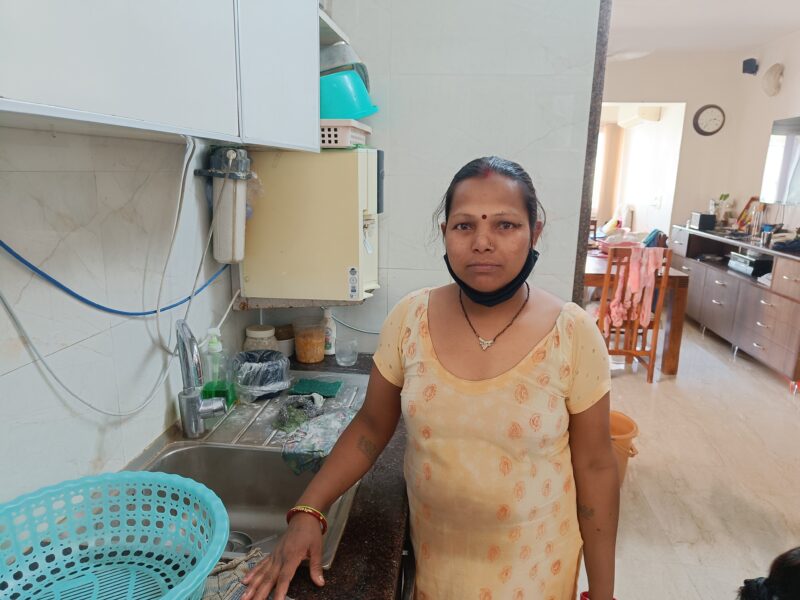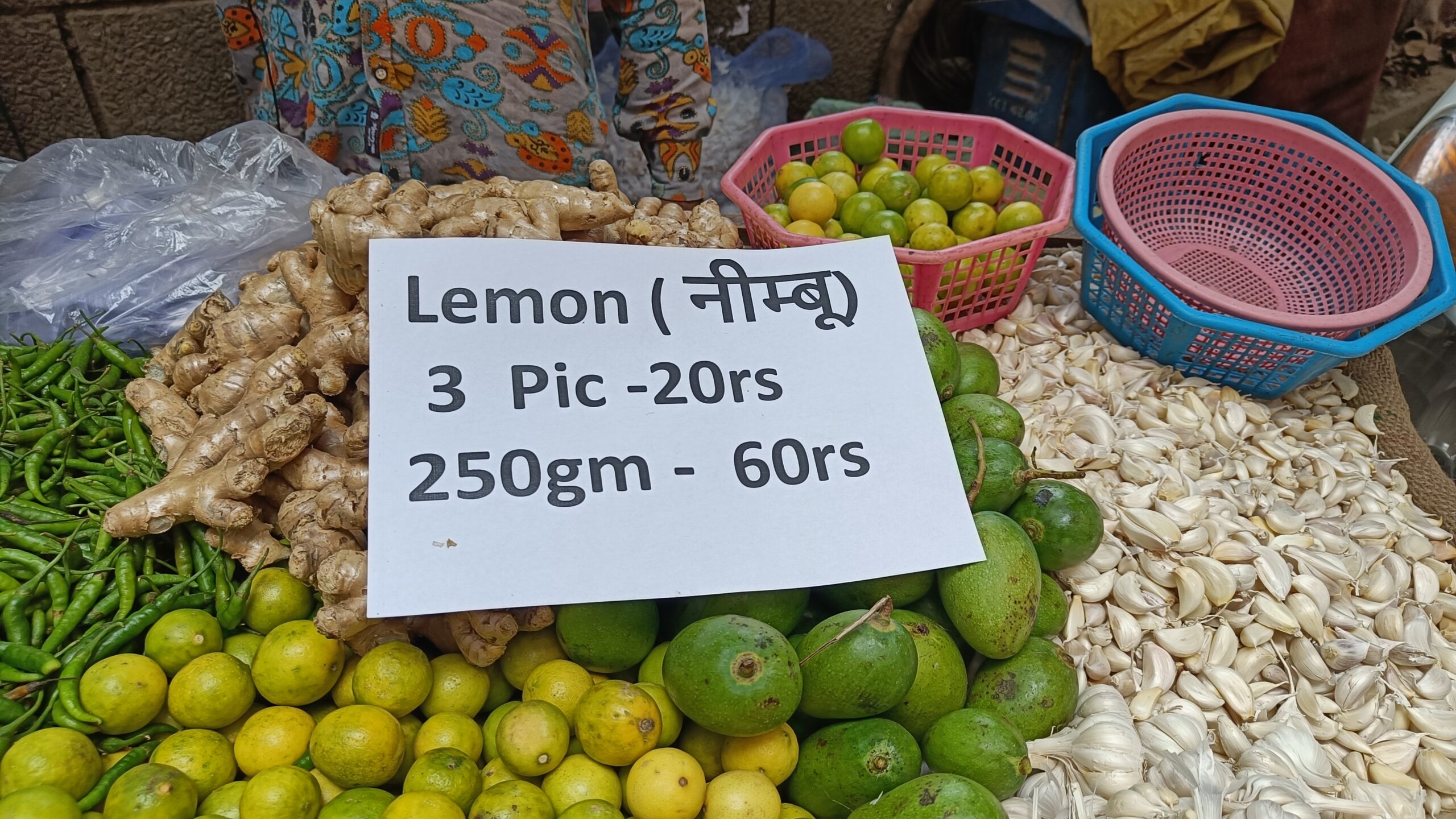Sunita Devi works as a cook, and with the income generated from this job, she helps her son in running the household. But a week ago, Sunita asked for a hike in salary saying: “Everything is costly, nothing is cheap. At this time, it is hard for me to manage with this salary.”
Sunita is not alone. Millions of people like her are now struggling to make ends meet and the reason behind this is inflation.
India’s retail inflation touched the 6.95% mark in March, which is the highest in the last 17 months. Even wholesale price inflation climbed to a four-month high to the 14.55% mark.
Lemon, the most commonly used fruit, has now squeezed pockets of ordinary people. In most of South Delhi’s vegetable markets, lemons were sold at the rate of Rs 7 per piece, whereas in kilos, they cost around Rs 240.
In Asia’s largest fruit and vegetable market, Azadpur mandi, a kilo of lemon costs Rs 200. When we asked Ram Yadav, a lemon trader, why lemon prices are so high, he explained that “lemon crop has not ripened yet, but demand in the market has increased because of summer and Ramzan.”
Shortage of stock and increase in demand has led to a rise in the price of lemon. According to Yadav, in the coming month, prices of lemons will come down to Rs 100 per kg, when the ripe stock arrives in the market.
Every other commodity has witnessed a price increase in the last few months, which has impacted middle-class families’ budgets. Rita Devi, who hails from Bihar and works as a domestic worker in East Delhi’s Patparganj is annoyed because of inflation. Her kitchen budget is witnessing a huge blow as a result.
“Earlier, I used to spend around Rs 5,000-6,000 a month on my kitchen, but in the last few months, this budget has increased to Rs 8,000. Everything is costly. Earlier, I was paying Rs 800 for a gas cylinder. But now, I have to pay Rs 1,200 (in the black market). Pulse and vegetable prices have touched the sky. I don’t know how I’ll manage if prices keep increasing like this”, says Rita dejectedly.
Rita works for four houses in the locality and she earns Rs 8,000. Now, her entire earning is exhausted by her kitchen. Rita’s husband is a truck driver and makes around Rs 15,000 a month, but at last, after all the hard work, husband and wife are unable to save money. Rita blames inflation as one of the reasons behind this.

Vegetables are a cheap source of nutrients, but now, they are burning holes through many pockets. Increasing prices of fuel have badly impacted the tertiary sector, and this directly affects the consumer.
Anil Malhotra, a vegetable trader at Azadpur Mandi named climate change as one of the reasons behind the increasing prices of crops. “Many vegetable crops this season did not even ripen because summer arrived earlier. Many crops have been damaged”, said Malhotra.
“Tomato, which was selling at Rs 35-40 a kg at wholesale price is now Rs 15-22 kg in mandi. The price has come down because crops from Rajasthan have arrived. Soon, other crops will also arrive in the market, which may give some respite to consumers”, adds Malhotra.
Other vegetables like coriander, which was earlier sold for Rs 50 per kg is now being sold at Rs 100 per kg, while the price of one kilogram of green chillies has increased to Rs 160 per kg.
The price of beans, another staple vegetable in the Indian kitchen, has touched Rs 120 per kg. Cauliflower, which was being sold for Rs 40 per kg in February, is now being sold at double the rate in just a little over a month.
Edible oil prices have also increased by 25-40% in the last month, and from 2021, the graph has been going upwards. The prices of edible oils have gone up from Rs 125 to around Rs 170-180 within only a month’s time. According to the experts, the prices will further increase in the coming months.
Laxmi Chand Aggarwal, Chairman of the Delhi Vegetable Oil Traders Association (DVOTA), while explaining the reason behind this sharp spike in prices said, “Currently, the war between Russia and Ukraine is the main reason behind inflation in prices of oils. Most of the sunflower oil is imported from Ukraine, and war has impacted the supply chain between Ukraine and rest of the world.”
Aggarwal added that while last year, a litre of sunflower oil was at Rs 80, its price has now increased and is being sold at Rs 180.
Palm oil is another important oil mostly imported to India. According to a report by Financial Express, palm oil accounts for more than 60% of total edible oil imports in India, followed by soybean oil and sunflower oil.
“Prices of palm oil were earlier increasing, but the war has given a blow to the prices of oil. India is dependent on both Malaysia and Indonesia for its palm oil needs, but the global effect of war on other oils has given an edge for palm oil to exceed in the market. When the prices of one oil increase, it impacts the whole edible oil market. Last year, palm oil was at Rs 70 per litre, but is at Rs 160 per litre now”, adds Aggarwal.
According to market experts, there is no hope that prices of edible oils will come down anytime soon..
Packaged eatables have also witnessed a rise in price these days. MRP, or the maximum retail price of several products like instant noodles and tea has increased considerably.
A 70 g pack of Maggi was earlier sold at Rs 10, then at Rs 12, and is now sold at Rs 14 in the market. The same is the case with tea and coffee, which has witnessed a hike of 5-10% in recent days.
For more stories that cover the ongoings of Delhi NCR, follow us on:
Instagram: https://www.instagram.com/thepatriot_in/
Twitter: https://twitter.com/Patriot_Delhi
Facebook: https://www.facebook.com/Thepatriotnewsindia





